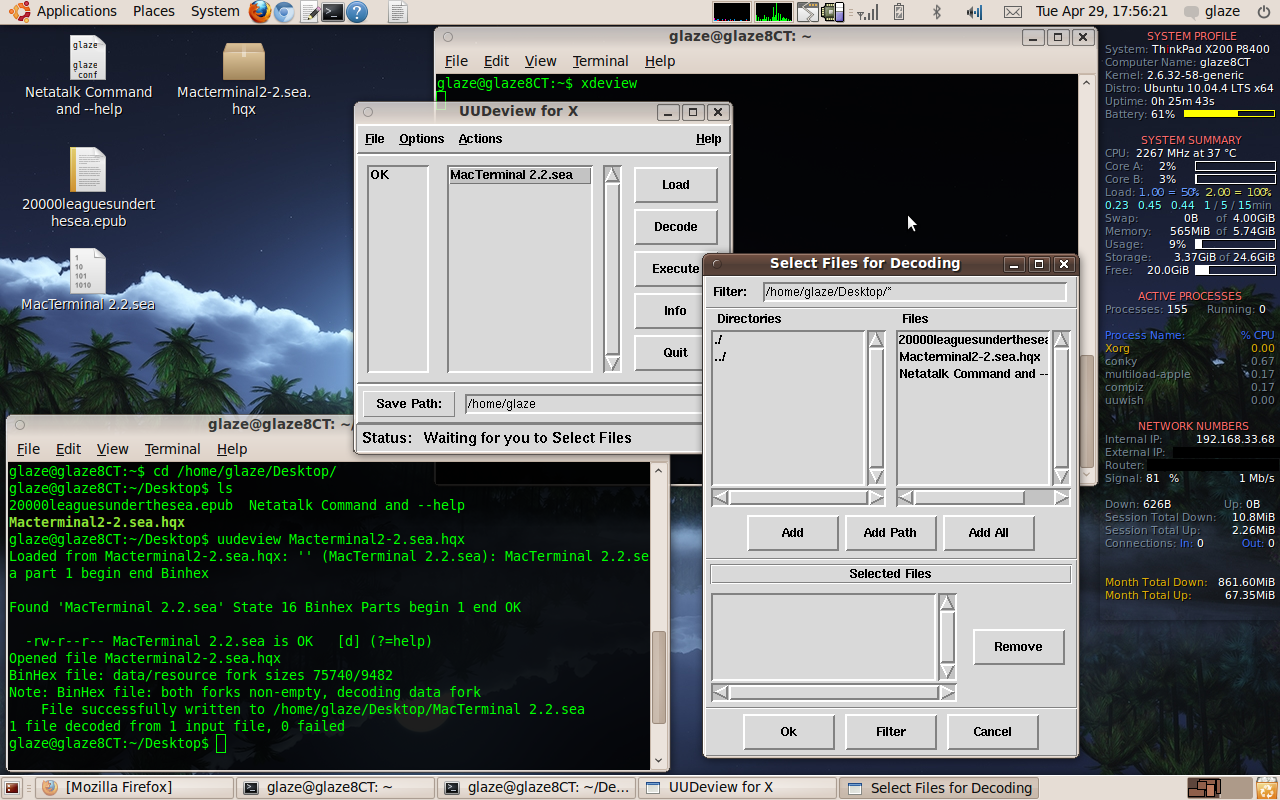

In other words, it will be able to run old Macintosh applications that otherwise could not be used on newer machines. The Linux version dynamically loads the ALSA library to play sound, so that Mini vMac will still run. And it is easier to transfer files between the modern computer and the emulator. 00:37:29:Autor Mini vMaca, emulatora klasycznych komputerów Apple z procesorem motoroli, produkowanym w okresie 84 - 96 (Macintosh Plus, Macintosh 128K, 512K, 512Ke, SE. It is much faster (on modern computers) and you can use a better screen, keyboard, and mouse. Mini vMac can be compiled for more RAM in the Macintosh II emulation, but it doesnt yet work. I know about Basilisk, but I find it much slower than Mini vMac, even with a Core2Duo Thinkpad. I really need it to run some old Mac Productivity apps. It is still legal to use the emulation after the real computer breaks.Īnd second, the emulation is more convenient than the real thing. Any chance that Mini vMac can compile for up to 128MB of RAM. It is common for the power supply to fail. This leads to the question, if you need to own the real computer to use it, what is the use of the emulator? First, a real Macintosh won’t last forever. Mini vMac requires a ROM image file to run, and so can be legally used only by those who own a 680x0 based Macintosh. All ROM files needed for Mini vMac is under Apple's copyright, and you must either dump it yourself or search online for it. Mini vMac is licensed under the terms of GNU GPLv2. Work is in progress on Macintosh II emulation. You can compile Mini vMac by following the guide here and type make to compile it. Theyre not working either though, since they require both processors to be emulated to function properly. Besides the Macintosh Plus, there are also emulations of the Macintosh 128K, 512K, 512Ke, SE, Classic, and SE FDHD. elektroplankton, meteos, submarinetechdemo and zeldagallery are no longer crashing. The meta program and data that generate the emulators (the Mini vMac build system) is rather bigger. The “Mini” in the name now means that each emulator in the family is as small and simple as possible. But vMac hasn’t been updated in many years, so Mini vMac may now be considered its continuation. It was originally intended to be of limited interest, a simpler version to serve as a programmers introduction to vMac. Mini vMac began in 2001 as a spin off of the program vMac.

I used both mini vMac 3.3.3, and the latest 3.4.1. I might get ambitious in the next few days and try to compile it on the 170 with my copy of CodeWarrior. The first member of this family emulates the Macintosh Plus. It seems like it might be running but there is something screwy going on with the video output. The center of this project is a family of free and open source emulators that allow such software to be used on modern computers. Mini vMac v3.3.0 Mini vMac v3.3.0 is released. The goal of the Mini vMac project is to help preserve software made for early Macintosh computers, the computers that Apple sold from 1984 to 1996 based upon Motorola's 680x0 microprocessors.


 0 kommentar(er)
0 kommentar(er)
